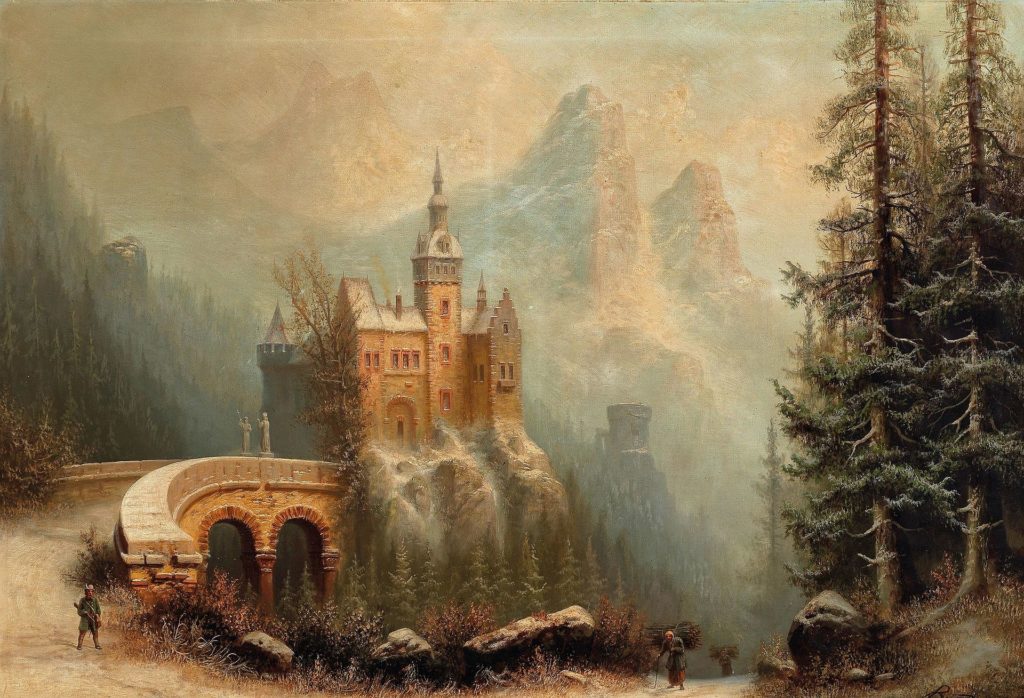
We all know some writers are planners and some writers are pantsers, but when it comes to structuring a novel, there are vastly more choices than the simple question of how you get it done.
Multiple POVs. Different time periods. Nonlinear mysteries. There are so many different ways to piece it all together.
How did you go about choosing the structure for the novel?
Did you let it come to you? Did you use a plot framework? (And if so, which one?) Did you try out several and arrive at the one that worked best?
If you’re unsure or stuck, check out my recent post on How to outline a novel.
What did you do when you chose yours?
Need help with your book? I’m available for manuscript edits, query critiques, and coaching!
For my best advice, check out my online classes, my guide to writing a novel and my guide to publishing a book.
And if you like this post: subscribe to my newsletter!
Art: Große Winterlandschaft mit Schlossanlage im Gebirge by Albert Bredow



I wanted to do a “Cloud Atlas”-sort-of interconnected take on a horror story, but when I started developing it out, two of the storylines seemed much bigger than anything else.
As such, my multi-protagonist, multi-plotline story got reconceived as a dual plotline, dual protagonist narrative. There are lots of thematic and narrative threads that tie together, but because the two main characters don’t interact directly, it’s proving tough to query.
I don’t know if I should be ashamed to say this or proud, but the structure of my WIP is similar to yours, Kevin. It’s what I call a “dual memoir,” that of myself and that of my late wife. (She wanted to write her memoir and got a start on it, but since she is unable to write it – obviously – I’ve done it for her and incorporated it into my own.)
As for my only novel, The Key and the Crest, The Unlikely Adventures of Frances Westerly, I can’t say I had a structure their, either. The story came to me nearly full blown and I sat down one day and started writing. Many critics say that no story “writes itself” but this one nearly did. It must have worked…I know about twenty people who have read it and they all say they loved it.
The same holds true for my only e-book, a novella I call Mouse Hole. I don’t even recall how the idea came to me but I just started writing one day and in a while I had a book. This is not to suggest that I had no problems with Mouse Hole or The Key and the Crest, I certainly did. But I wasn’t consciously aware of any particular structure that I used. I just wanted to tell a story.
i originally started with a vanity published novel (yes, I know) that I wanted to re-write. While rewriting I remembered another slushie novel that would work with it, and few months later, i was well on my writing a trilogy. The original idea was to write it in such a way so that I could permanently retire a female name from my arsenal. I made the character as a hybrid and gave her two sisters who were symbionts. Throw in an omniscience voice, different background areas (purgatory as a late 19th century western town followed by a modern wedding and honeymoon) and a MC who is both protagonist and antagonist, and you got the makings of a very strange trilogy.
I’m a pantster. I start with an idea and something emotionally strong I want to express, then I figure out a few dots to connect and dive in, making it up as I go along. My structural work gets taken care of during revisions and involves beta readers.
This might be literary blasphemy, but I’ve taken my inspiration from how a half to a full hour of television is structured. Most of my novels have a central A & B story and sometimes C-Story.
I like having a C-Story, because it’s the one thing I can cut for the third draft that won’t bother me.
I agree with one of the other commenters that I just want to tell a story, Working out a structure is too left-brained for me. The same way I compose and illustrate is to just keep doing it over and over until the whole story is revealed. A saga I’ve been writing for a long time turns out to have a different main character than I always thought. Only after years of re-writing, I discovered that it was more illuminating to have a prologue featuring the romantic protagonist and not the main character. Then after many more rewrites, I discovered that the main character dies after the end of the story, and I wanted to included what happened after, so it would have to be told by the protagonist. Then I realised it was actually his story, and he was more interesting than the character whose pov we view the rest of the story through. But I wanted to keep it her story as her observations and reactions to the protagonist provide more interest than if he narrated.
I start writing it (usually in the voice of the character) and see where it goes. At some point it feels right or it doesn’t and I rework. I’ve never tried anything complicated, though. Hats off to those that have and do. House of Leaves, amirite? Whew.